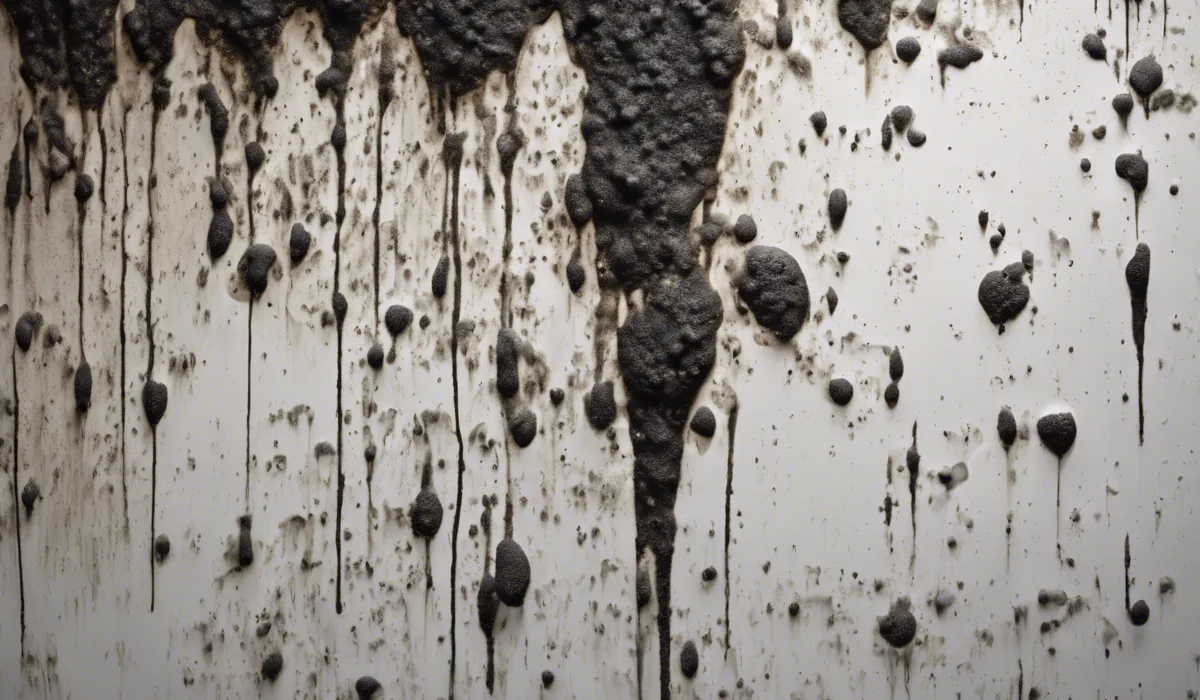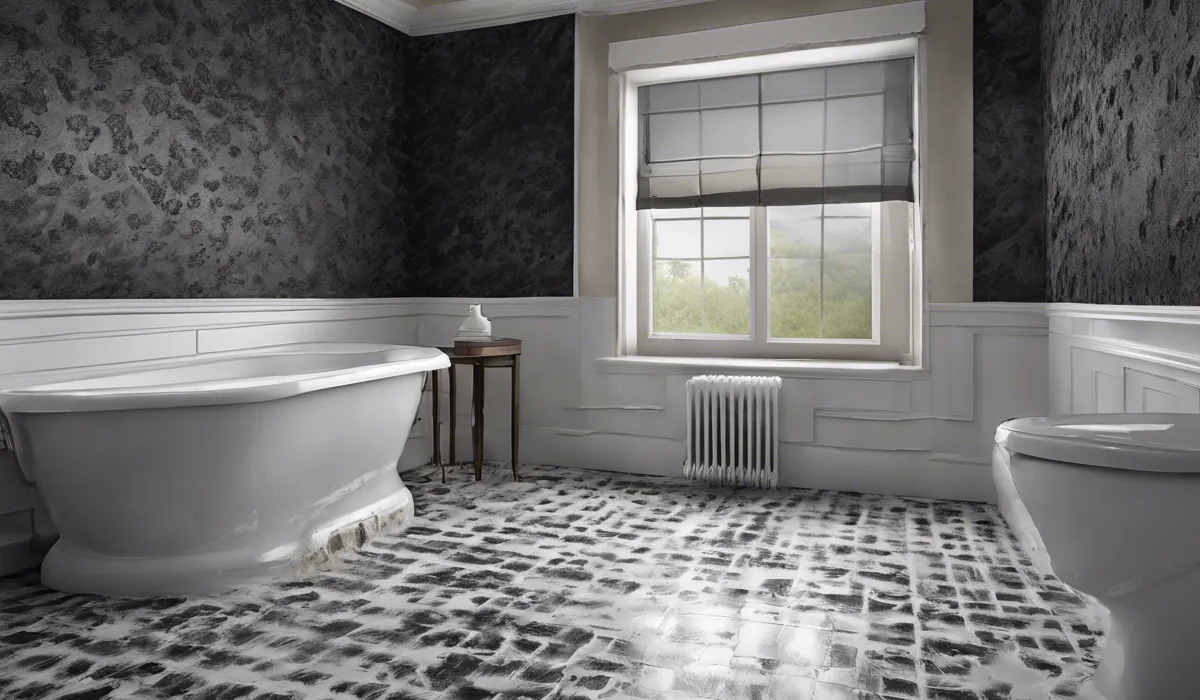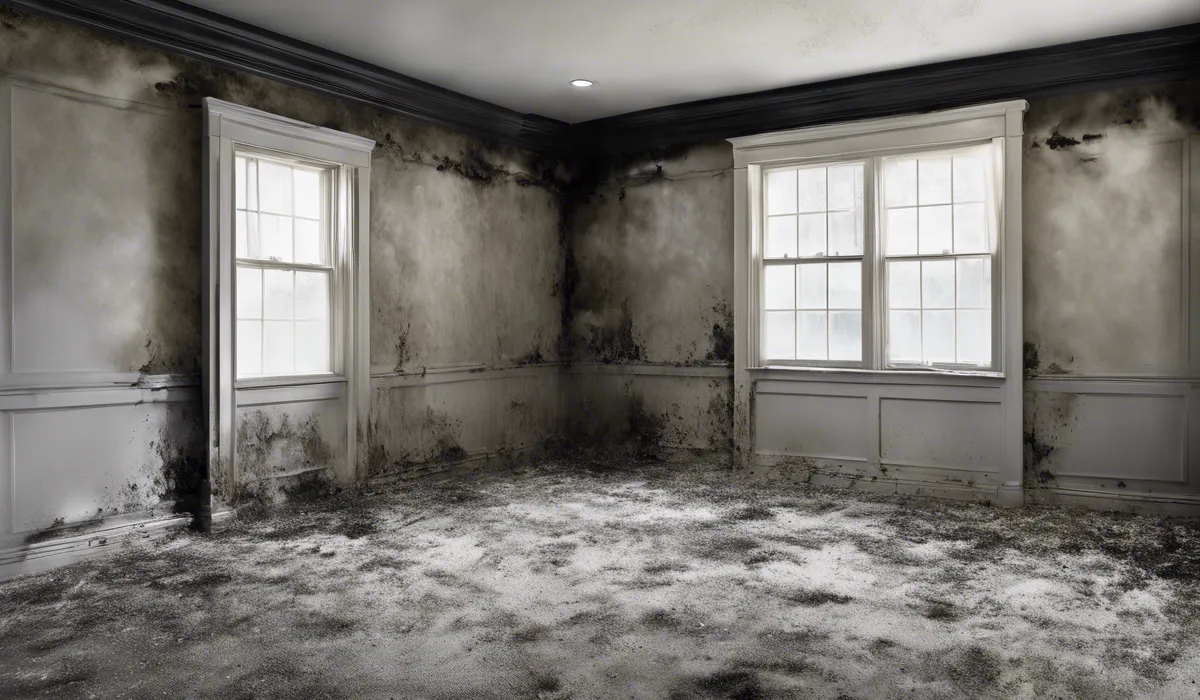To cover black mold, clean the area with a mold-killing solution. Once dry, apply a stain-blocking primer designed for mold coverage.
Finish with mold-resistant paint, ensuring the surface is sealed and protected. Avoid merely painting over without treating the mold first.
Understanding Black Mold

What Is Black Mold?
Black mold, scientifically known as Stachybotrys chartarum, is a type of fungus that can grow indoors on damp surfaces.
This mold is dark green or black and can appear slimy. Identifying black mold involves looking for these distinct characteristics in areas prone to moisture within your home.
Health Impacts of Black Mold
Exposure to black mold can lead to a variety of health issues, especially in those with weakened immune systems, allergies, or respiratory conditions.
Symptoms may include coughing, wheezing, nasal stuffiness, or throat irritation. It’s crucial to minimize exposure and address any mold issues for the safety of all occupants.
Black Mold’s Favorite Conditions
Mold thrives in moist, warm, and poorly ventilated environments. Places like bathrooms, basements, and kitchens can provide the perfect breeding ground for mold when there is excess moisture and inadequate air circulation.
Regularly inspecting these areas can help catch mold growth early on.
The Root of the Problem
It’s not enough to simply cover black mold; the underlying moisture issue must be resolved.
Whether it’s a leaky pipe, condensation, or high humidity, identifying and fixing the source of water is essential for preventing future mold growth and ensuring a healthy living environment.
Preparing to Cover Black Mold

Safety First: Protective Measures
When dealing with mold, it’s important to protect yourself. Use personal protective equipment such as gloves, goggles, and an N-95 respirator to prevent mold spore inhalation.
Ensure the space is well-ventilated and that you’re following proper safety guidelines to protect your health.
Cleaning Before Covering
Before covering black mold, clean the area thoroughly with a mold-killing solution. Allow it to dry completely to ensure no moisture remains.
This step is crucial to prevent mold from continuing to grow beneath the surface you’re about to cover.
Choosing Mold-Resistant Materials
Select the appropriate materials to cover black mold effectively. Use a stain-blocking primer specifically designed for mold coverage, followed by mold-resistant paint.
These products are formulated to seal in the mold and prevent it from penetrating through the paint.
Sealing Off the Area
To prevent mold spores from spreading, seal off the work area with plastic sheeting and tape.
This creates a barrier that keeps spores contained within the treatment area, protecting the rest of your home from potential contamination during the process of covering the mold.
Professional Mold Remediation and Prevention

Recognizing When to Call the Experts
If the mold problem is extensive or if you’re unsure about handling it yourself, it’s time to call in professional mold remediation services.
They have the expertise and equipment necessary to safely and effectively remove mold from your home.
The Mold Removal Process
Professional mold removal involves several steps: inspection, containment, filtration, removal, cleaning, and restoration.
Experts will ensure that the mold is removed safely, and that your home is restored to a safe state, free from mold and the risks it poses.
Long-Term Mold Prevention
To prevent black mold from returning, maintain a dry and well-ventilated environment.
Use dehumidifiers, fix leaks promptly, and ensure that your home has adequate insulation and ventilation, especially in areas like the ceiling box and other nooks where moisture can accumulate.
Maintenance to Keep Mold Away
Regular home maintenance is key to preventing mold. Clean and inspect your home frequently, especially in areas where water is used, like near the toilet flange.
Make sure to address any dampness or water damage immediately to keep your home healthy and mold-free.
By following the above guidelines, you will be better equipped to tackle black mold issues in your home safely and effectively.
Remember to always prioritize safety and health, and when in doubt, consult with professionals for the best results in mold remediation and prevention.
FAQs About Covering Black Mold
What is the first step in covering black mold on a surface?
The first step is to clean the area with a mold-killing solution to ensure all mold spores are eliminated before covering it.
Can I paint directly over black mold?
No, you should not paint directly over black mold; it must be treated with a mold-killing solution and completely dried before covering.
What type of primer should be used to cover black mold?
A stain-blocking primer designed specifically for mold coverage should be used after treating the mold.
Is regular paint sufficient to cover black mold?
No, after applying the primer, you should use mold-resistant paint to ensure the surface is sealed and protected against future mold growth.
What are the risks of painting over black mold without treating it?
Painting over black mold without treating it can lead to continued mold growth beneath the surface and potential health risks, as the mold is not eradicated.
Final Thoughts
Addressing black mold effectively requires initial cleaning with a mold-killing solution. Post-cleaning, a stain-blocking primer must be applied, specifically one that combats mold.
The process is completed by painting with mold-resistant paint to seal and protect the surface. It’s crucial to treat the mold rather than simply painting over it to ensure long-term remediation.
